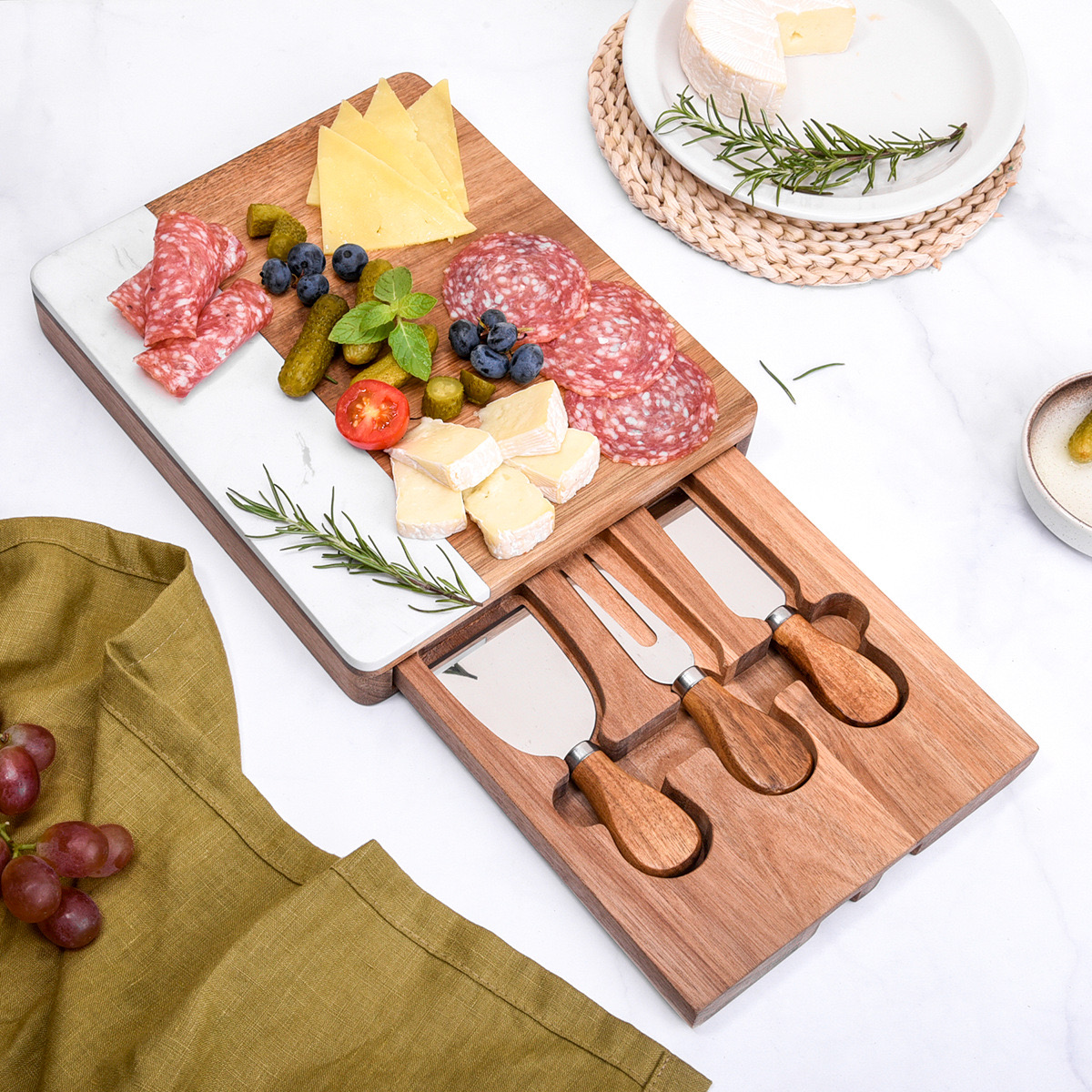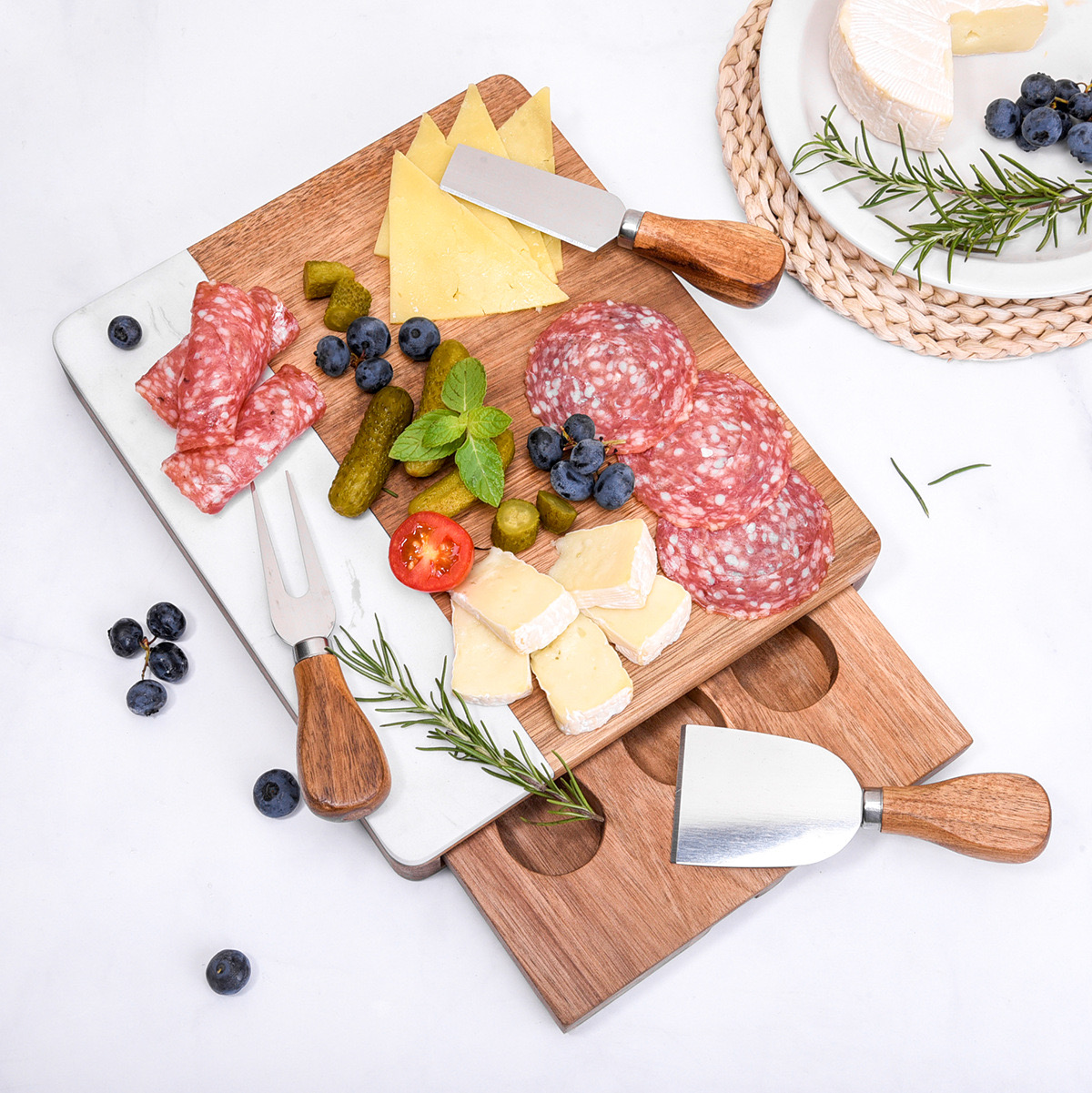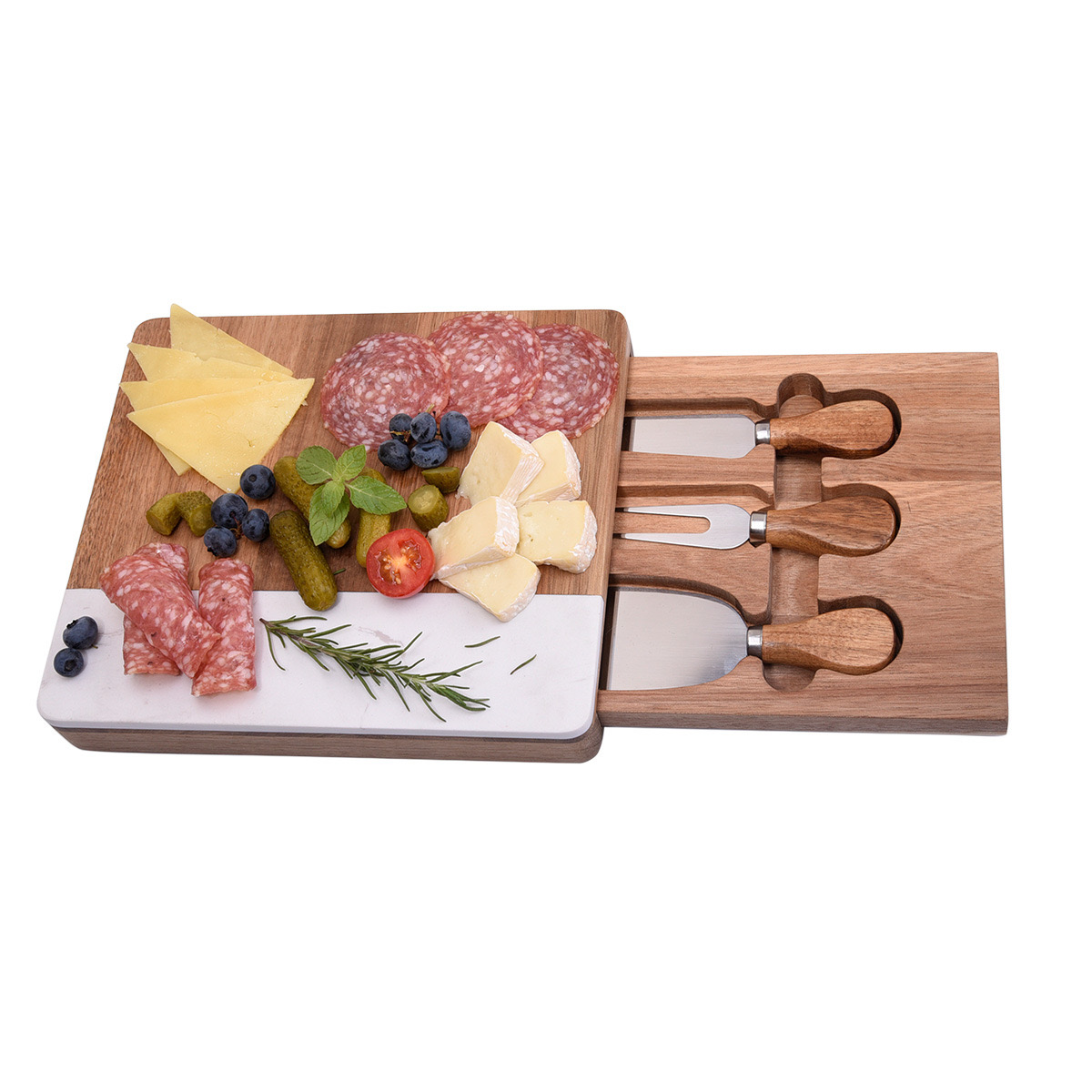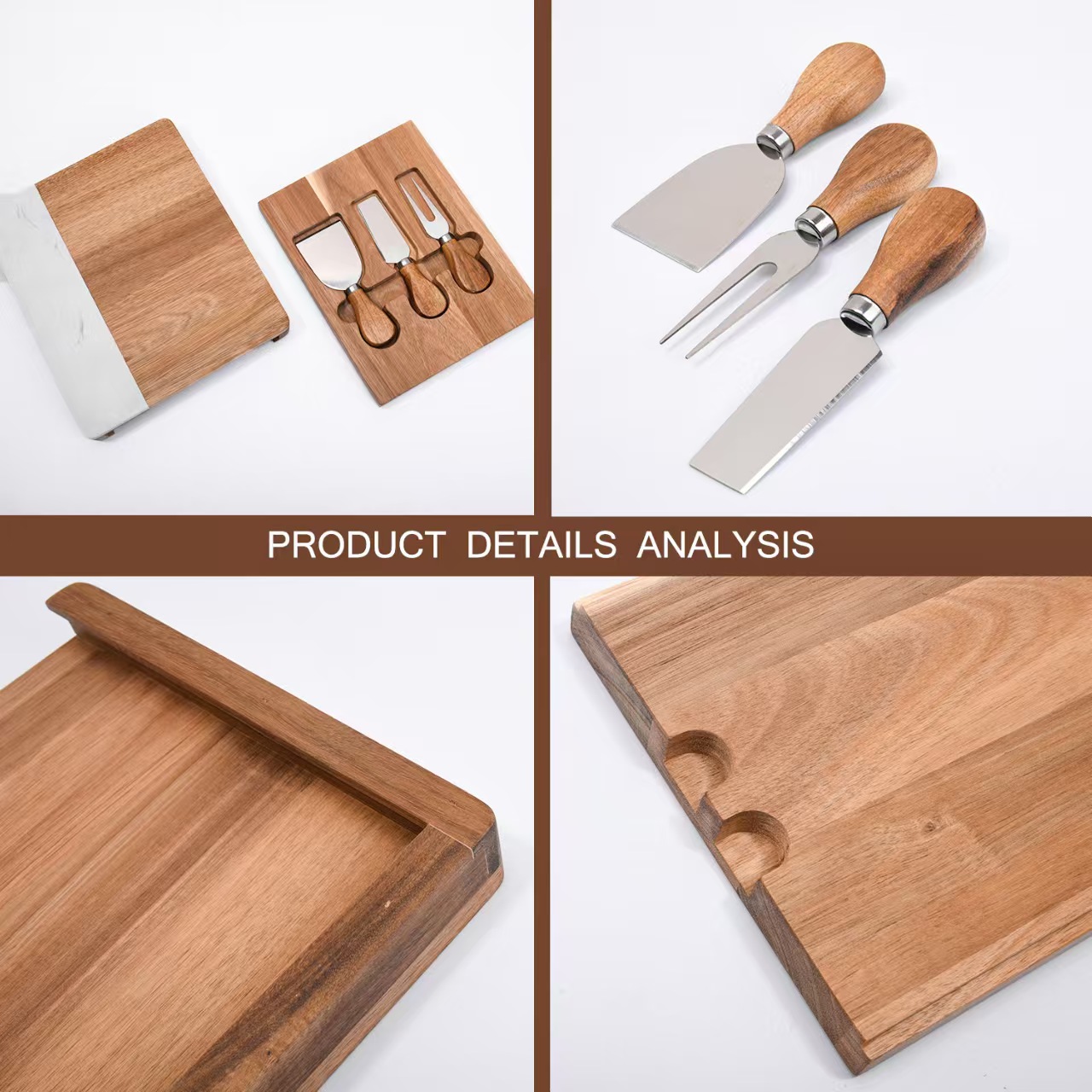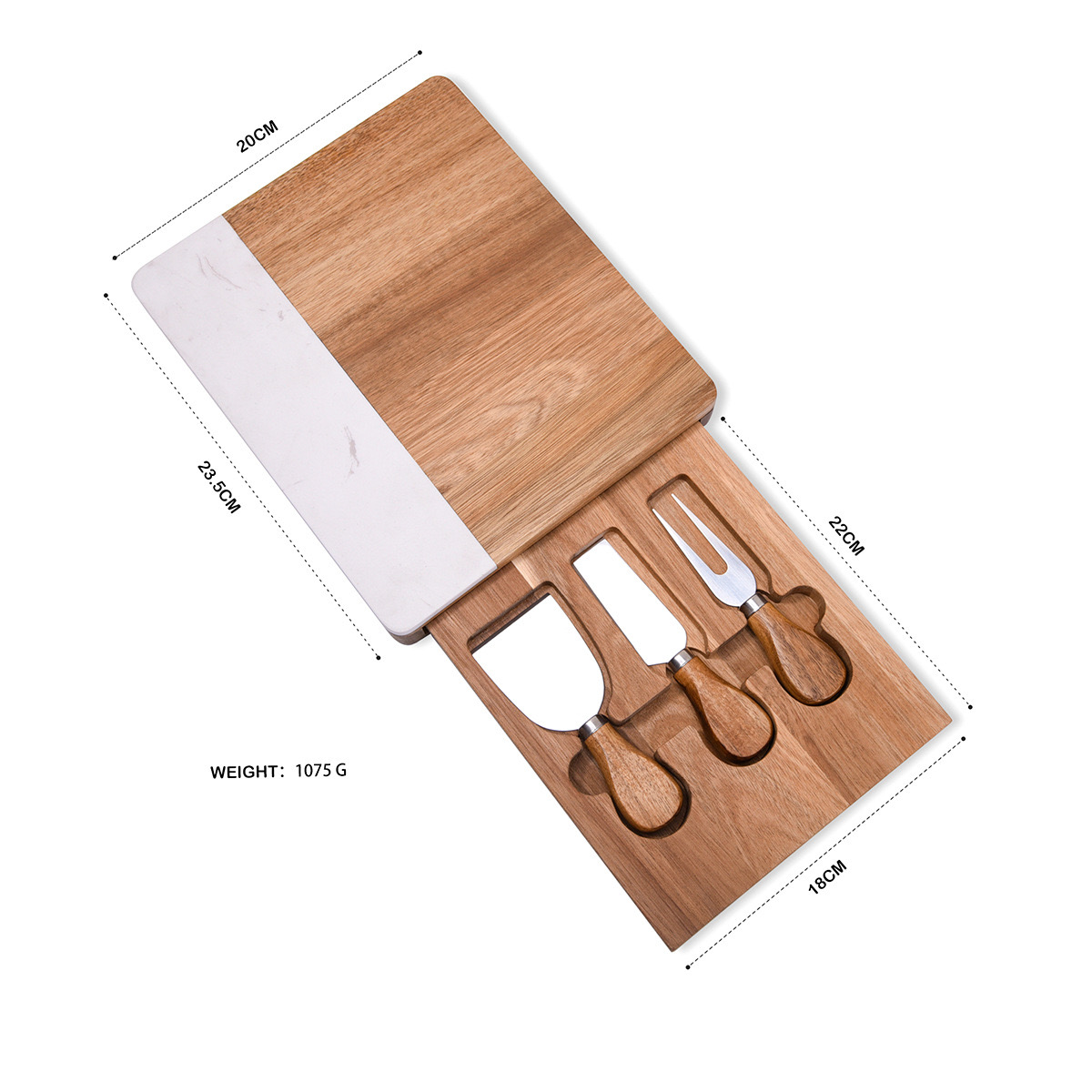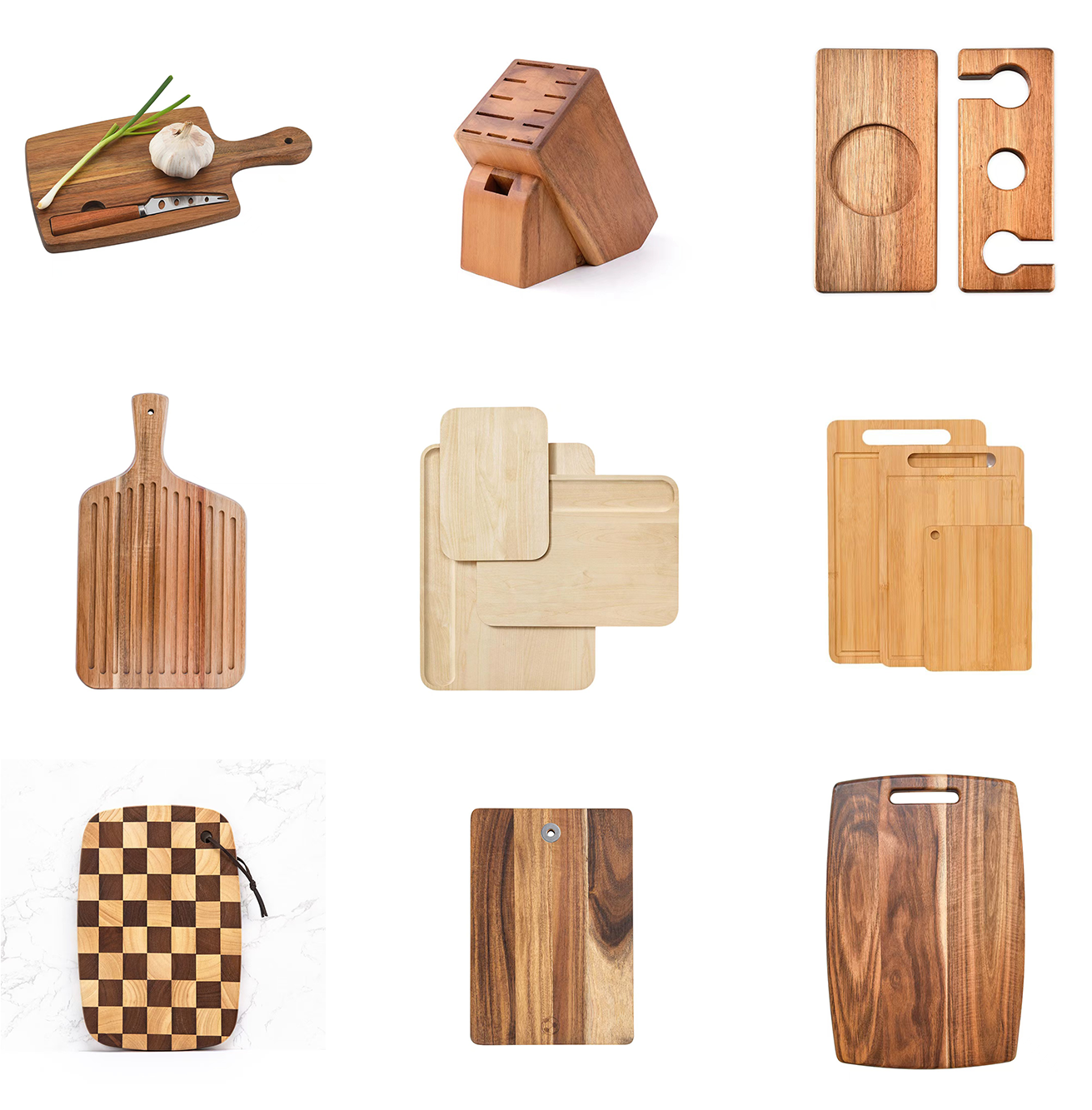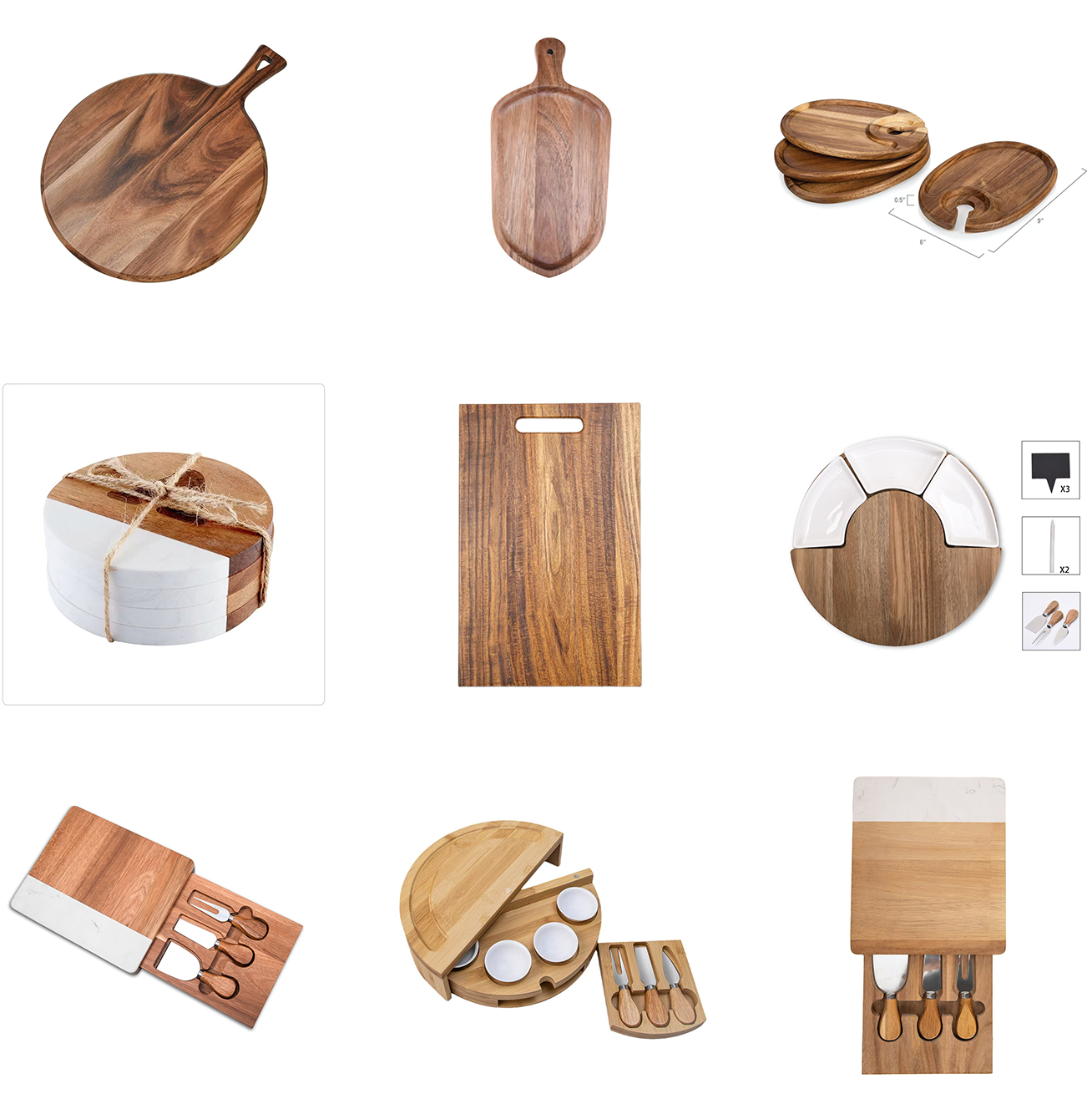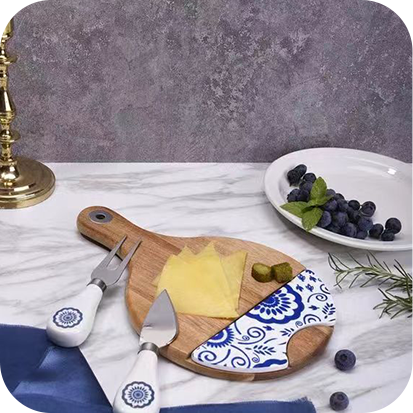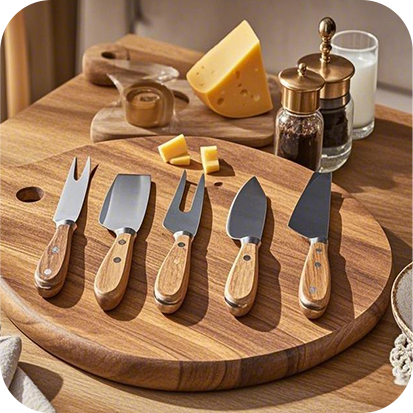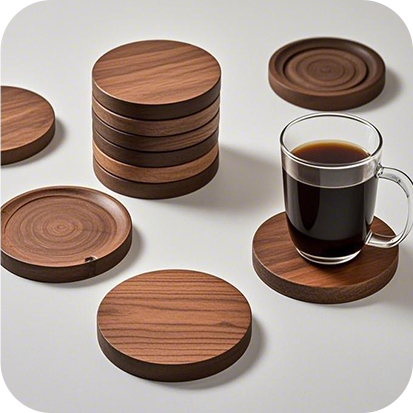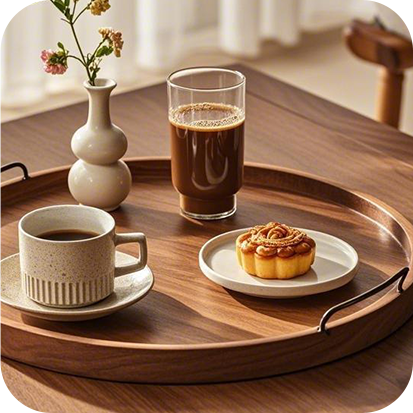Can I put my cutting board in the dishwasher?
Nope! The high heat from the dishwasher can dry out the wood, causing cracks and splits—turning your cutting board into a “work of art” (but not the kind you want). Stick to hand washing for longevity!
How do I get rid of garlic, onion, and other smells on my cutting board?
Salt or lemon juice to the rescue! Wipe it down, let it sit for a few minutes, rinse with water, and voila—smell gone and board fresh!
How should I store my cutting board?
Stand it up! Let it “breathe” to avoid moisture and warping. No direct sunlight, and your board will last as long as a good friendship.
Which is more sanitary: a plastic or wooden cutting board?
Plastic boards are easy to clean but may contribute to microplastic ingestion. Wooden boards, however, have natural antibacterial properties—safe, sustainable, and full of “woodsy” goodness
How do I choose the right cutting board size and thickness?
Need something compact? Go for 15” x 12” for everyday use. Want something bigger? 20” x 15” is perfect for large kitchens. Thickness depends on your needs—1” for home use, 2” for professional kitchens—durable and sturdy!
What's the difference between a groove and a finger slot on a cutting board?
Grooves: Keep juices from splashing everywhere.
Finger slots: Give your fingers a “VIP” spot to grip the board securely, making your cutting experience safer and smoother.
What’s the difference between a cutting board and a chopping board?
Cutting boards are the all-rounders—perfect for meat, fish, vegetables, and more. Chopping boards are a specialized version, lighter and more nimble for vegetable cutting.
What woods are best for cutting boards, and what’s their hardness?
Maple, walnut, cherry, acacia wood, and bamboo are excellent choices! We can produce cutting boards from various materials to meet your needs!
How do I clean my cutting board?
Warm water and a little soap will do. Want something fresher? A vinegar-water solution works wonders too.
How do I remove mold from my cutting board?
Sprinkle some coarse salt, rub it with half a lemon, or use baking soda! Let it sit, wipe off with a wet cloth, and dry thoroughly. Mold be gone!
What temperature can my wooden cutting board handle?
Typically, wooden cutting boards can withstand temperatures up to 80°C to 100°C. Anything higher and they might “lose their cool”—warping or cracking.







